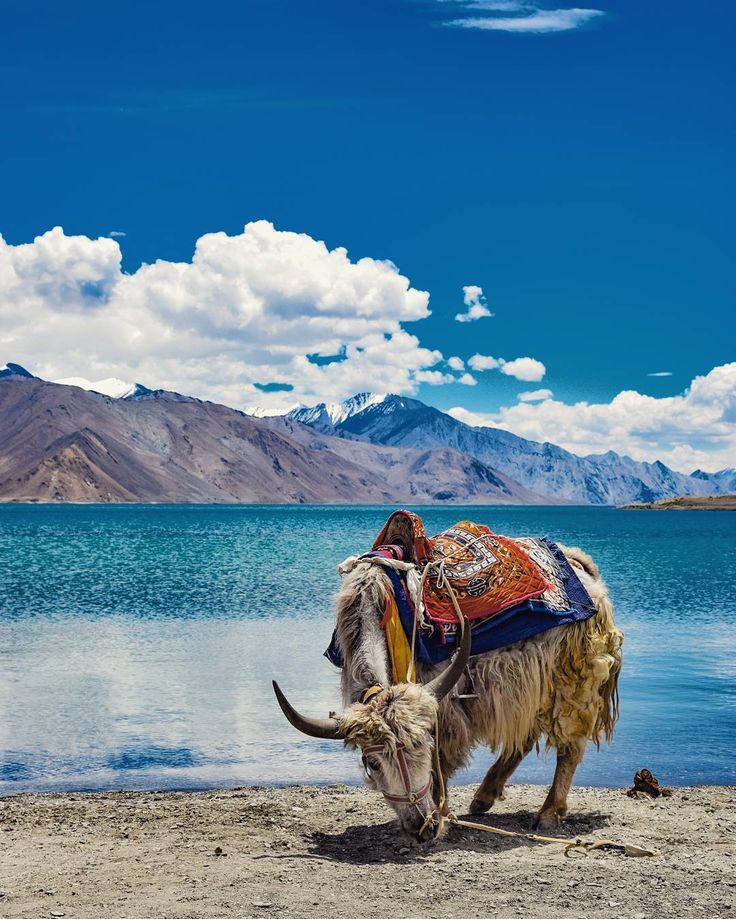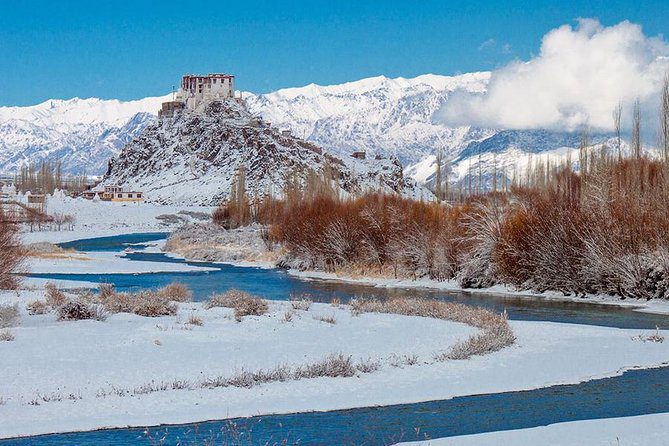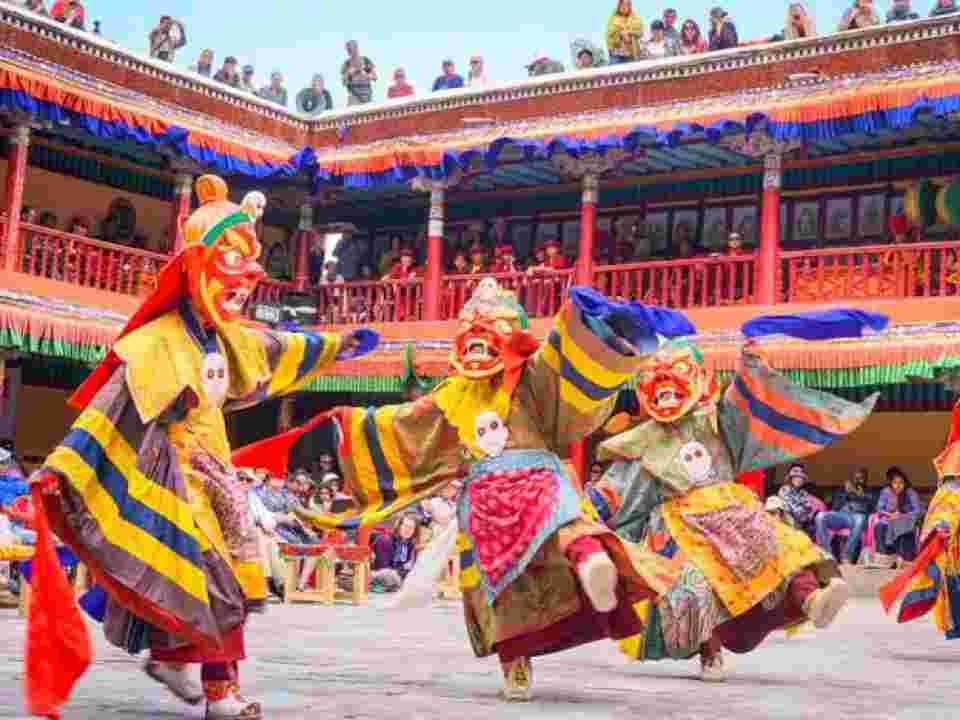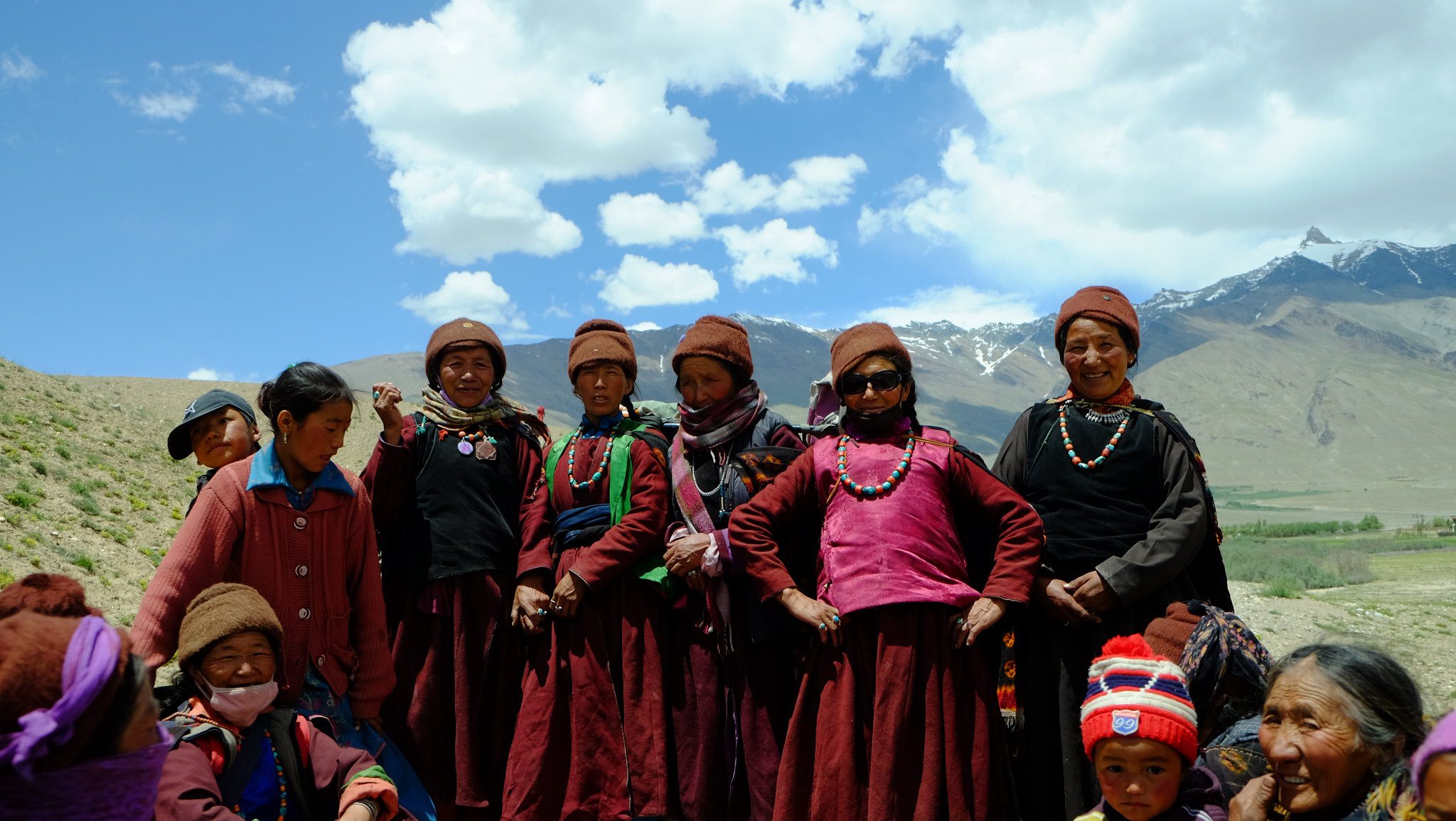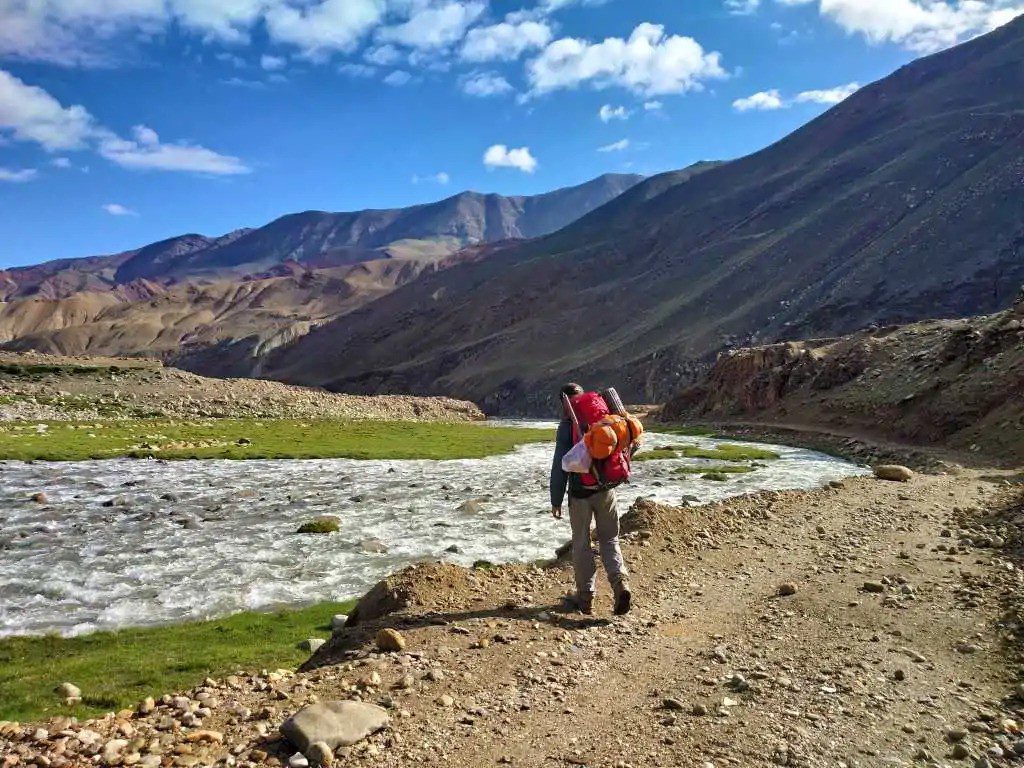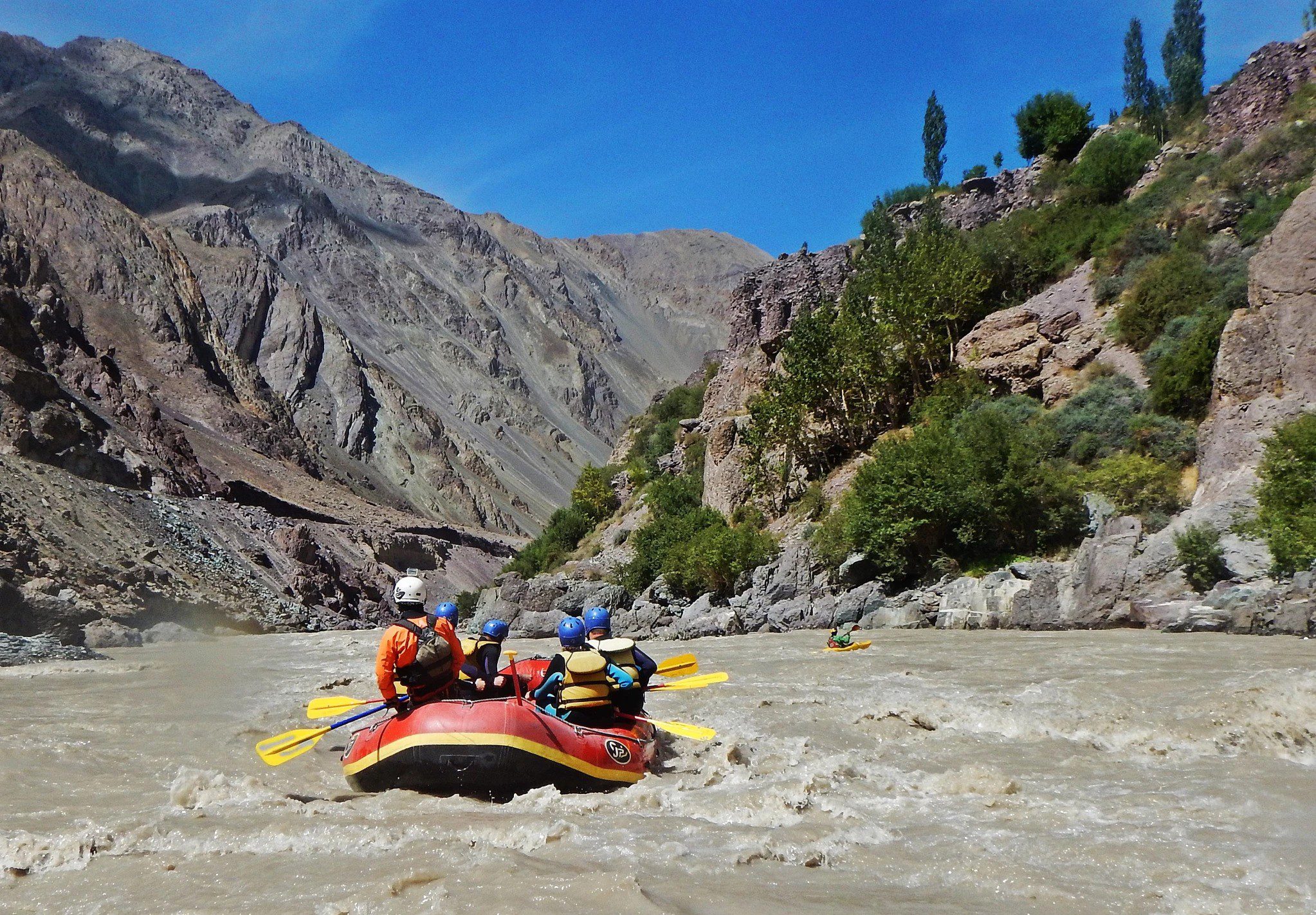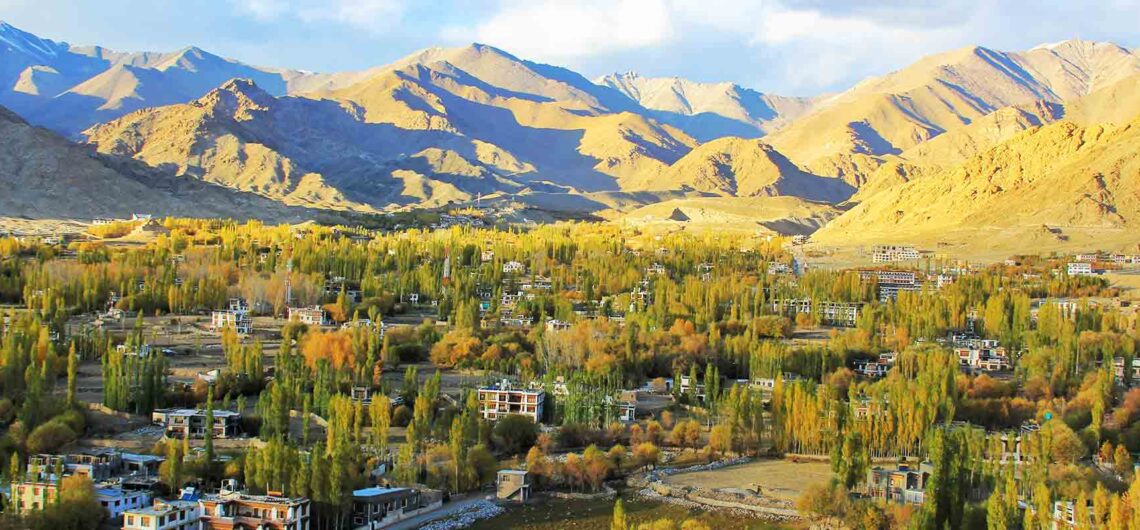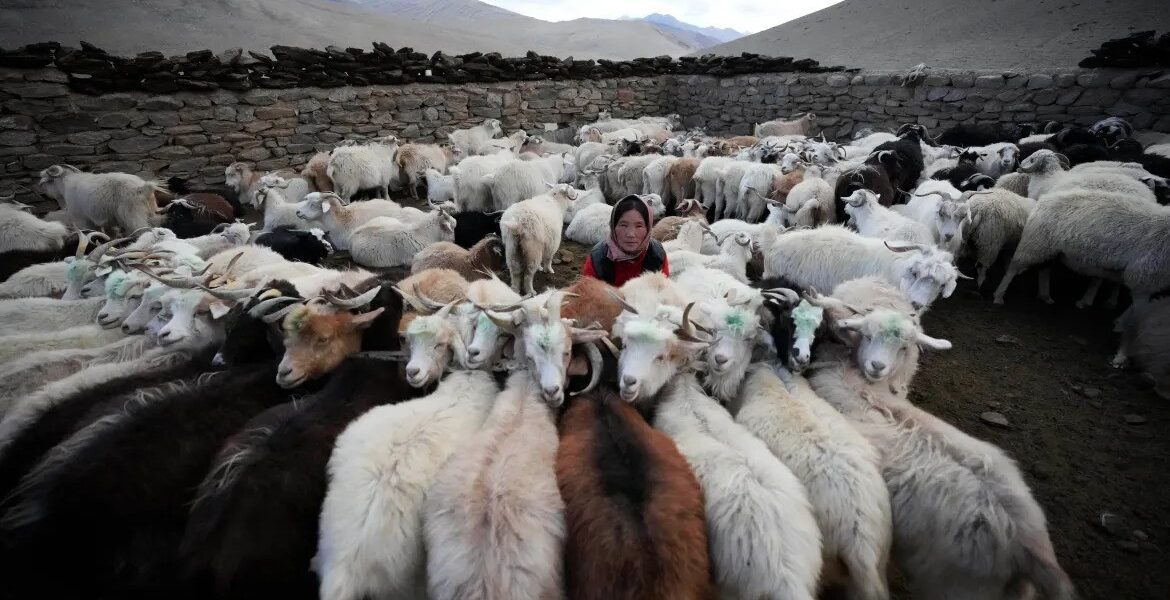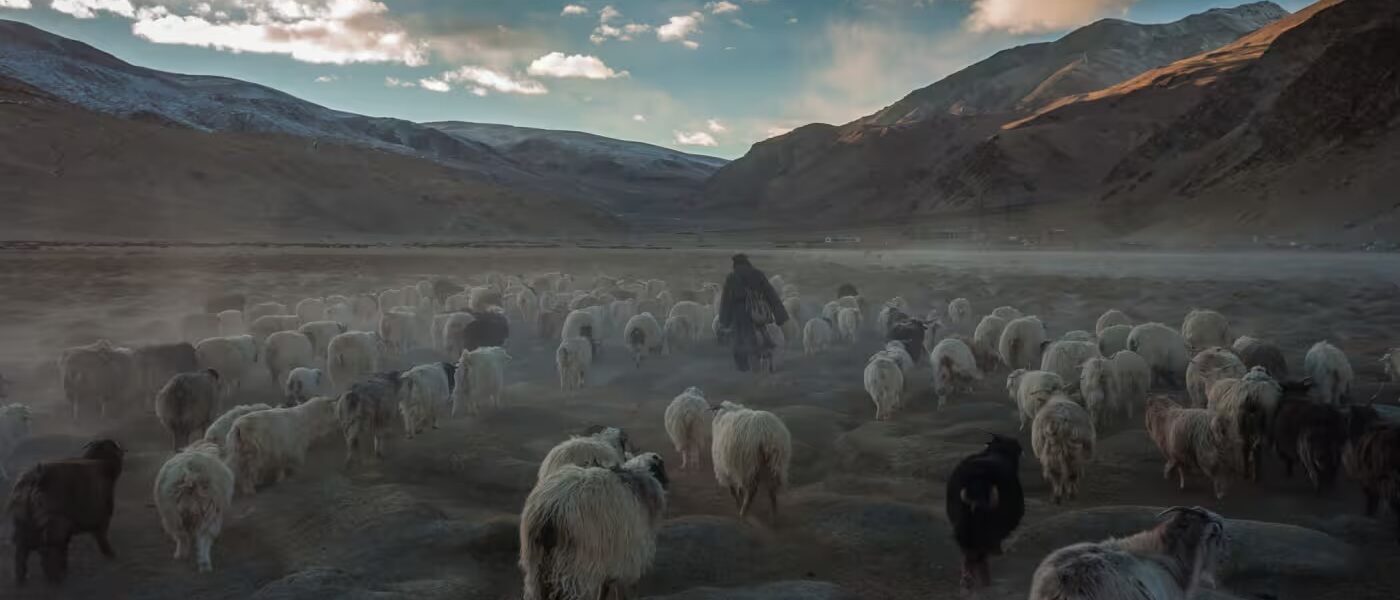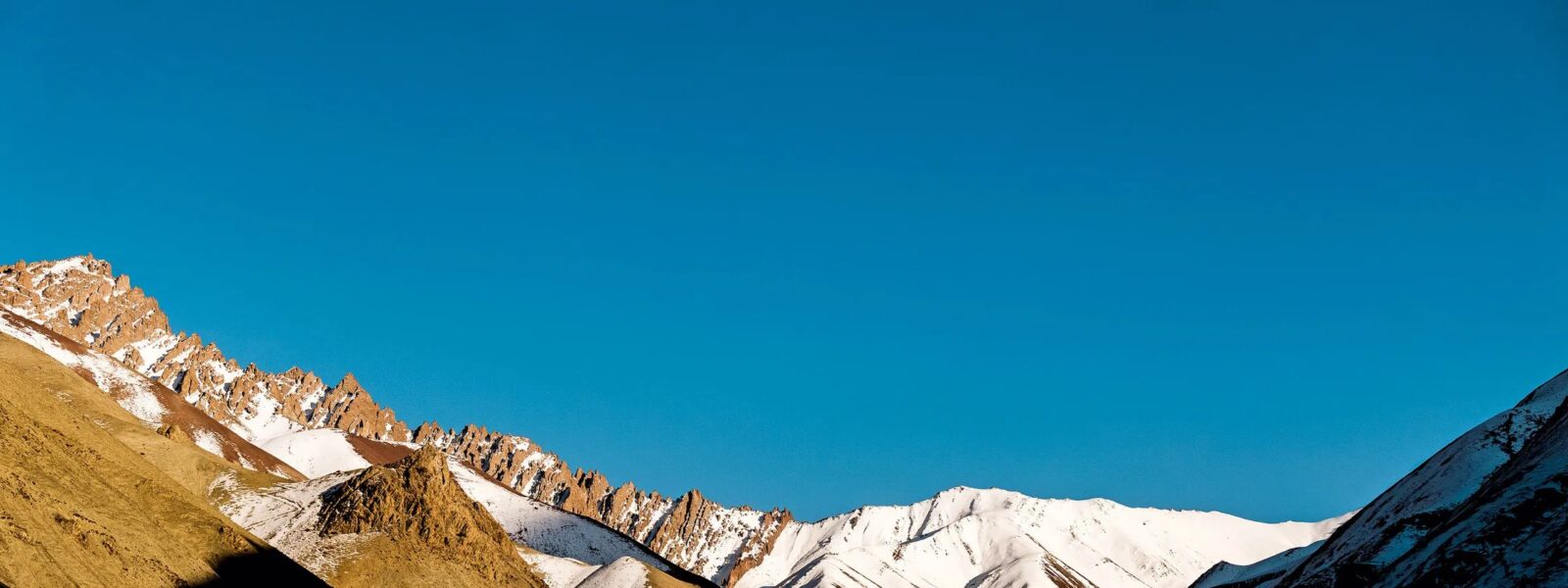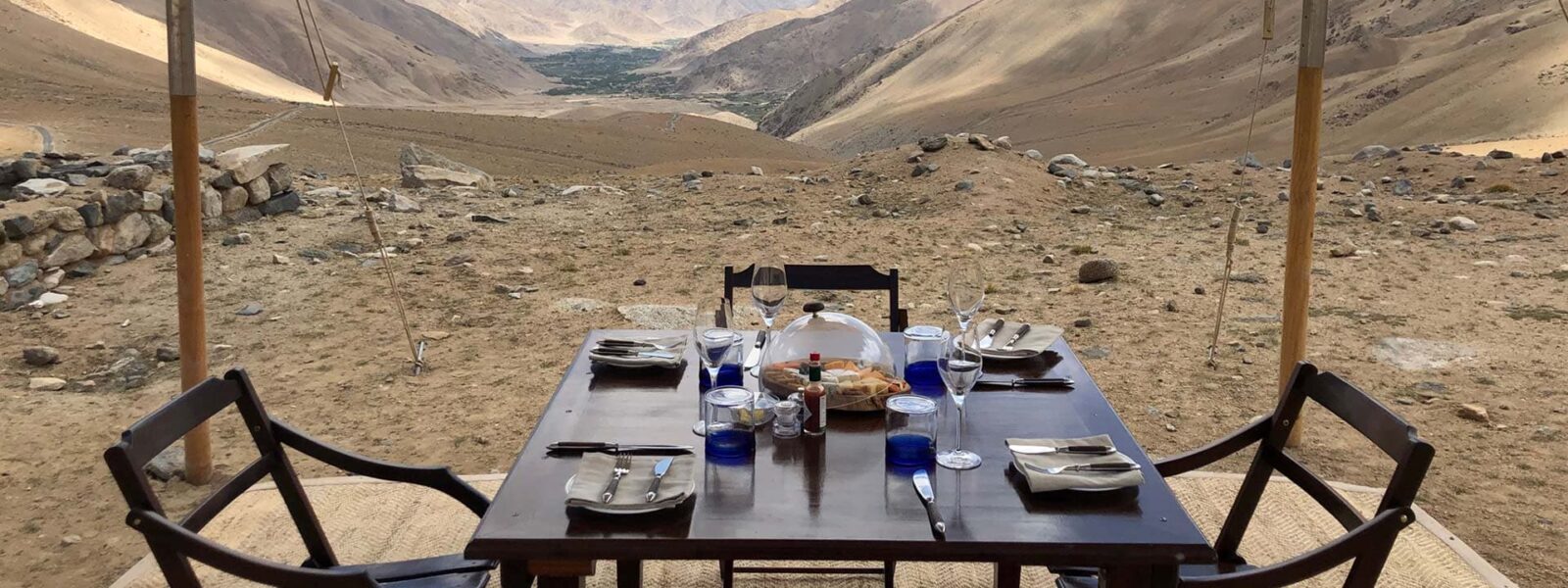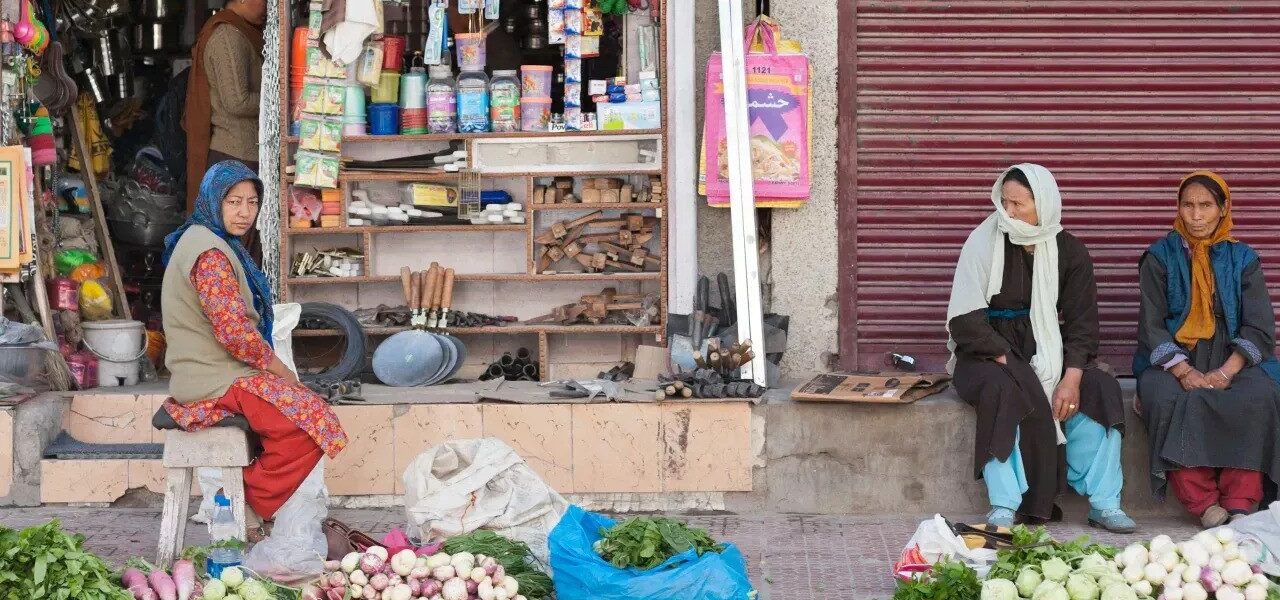Introduction
Ladakh. A name that stirs visions of vast landscapes, serene monasteries, and skies that seem closer than anywhere else on Earth. Situated high in the Himalayas, this “Land of High Passes” offers an experience like no other. For the traveler who seeks both adventure and introspection, Ladakh is more than a destination—it is a revelation. Whether you’re drawn by its rugged beauty, rich culture, or the promise of spiritual solace, Ladakh invites you to journey beyond the ordinary.
This is not just a place to visit, but a place that demands something of you: your attention, your reverence, your willingness to be transformed. Every step in Ladakh feels like a dialogue with the elements, with history, and with yourself. It’s where the silence speaks louder than words, and the landscapes stretch out like verses of an unwritten poem.
Top Reasons to Visit Ladakh
Landscapes That Defy Imagination
The Land of High Passes
Driving through Ladakh’s famous high passes is not just travel; it’s a pilgrimage. Khardung La and Chang La, some of the highest motorable roads in the world, offer breathtaking views and a sense of achievement unmatched by any other journey. The roads seem to wind endlessly, cutting through mountains that appear both immovable and eternal. Each bend reveals a new perspective, a new revelation. At these heights, you feel as though you are standing on the threshold of the sky, where the air thins and time slows.
The Lakes: Mirrors of the Divine
Pangong Lake and Tso Moriri are not just lakes but living canvases that change hues with the sky. Their pristine waters reflect the rugged mountains, creating an ethereal beauty that leaves visitors speechless. Pangong, with its surreal blue expanse, feels alive, as if it breathes in rhythm with the wind. Tso Moriri, more reserved and introspective, draws you into its stillness, making you question the nature of time and motion. These lakes are not just destinations; they are experiences—moments when nature reveals its quiet grandeur.

The Mountains: A Dialogue with Eternity
The towering Himalayas and Karakoram ranges dominate Ladakh’s landscape. Their silent majesty inspires awe, while their sheer scale humbles all who stand before them. They are not just mountains; they are sentinels of time, witnesses to the slow, inexorable passage of millennia. To walk among these giants is to feel both small and infinite, a paradox that stays with you long after you’ve left.
Unique Cultural Heritage
Monasteries as Sanctuaries
Ladakh is deeply influenced by Tibetan Buddhism. Its monasteries, such as Hemis, Thiksey, and Alchi, offer more than architectural beauty—they provide spiritual solace. Visitors can experience the calm of prayer halls and the wisdom carried in ancient chants. Walking into these monasteries is like stepping into a timeless realm. The air is thick with incense, and the walls whisper stories of devotion and resilience. Here, the world outside fades away, leaving only the rhythm of prayers and the quiet hum of the soul finding its anchor.

Festivals Full of Life
In the harsh landscapes of Ladakh, festivals burst forth with color and joy. The Hemis Festival, with its vibrant dances and rituals, celebrates life’s resilience and the community’s enduring spirit. These festivals are not just events; they are manifestations of hope and continuity, a reminder that even in the most unforgiving terrains, humanity finds reasons to celebrate. The energy is infectious, the colors dazzling, and the sense of togetherness profound.

The Warmth of Ladakhi People
Despite their remote existence, Ladakhis welcome visitors with genuine smiles and unmatched hospitality. Their stories and way of life reveal a profound connection to the land. They live simply but richly, in harmony with their surroundings. To share a meal with a Ladakhi family or listen to their tales is to glimpse a way of life that values community and resilience above all else. It is their warmth that makes Ladakh not just a place to visit, but a place to belong.

Adventure Activities for Thrill-Seekers
Trekking through Majestic Trails
Ladakh is a trekker’s paradise. Trails like the Chadar Trek—on a frozen river—and the Markha Valley Trek challenge your limits while rewarding you with unparalleled beauty. Trekking in Ladakh is not just about the destination; it is about the journey itself. Each step is a conversation with the land, each breath a reminder of the thin line between challenge and triumph. The frozen Zanskar River beneath your feet, the stark cliffs towering above—everything conspires to make you feel alive in ways you’ve never felt before.

Epic Road Trips
Biking through the Leh-Manali Highway or scaling the heights of Khardung La is a dream for every adventurer. The winding roads and breathtaking views make the journey unforgettable. The roar of the engine, the wind against your face, the ever-changing vistas—these moments on Ladakh’s roads are etched into your memory, becoming stories you’ll tell for years to come.
Wildlife and River Rafting
From spotting snow leopards and Himalayan ibex to rafting through the icy waters of the Zanskar River, Ladakh offers thrills for every kind of adventurer. The wildlife here is elusive, rare, and deeply symbolic of the region’s untouched beauty. To see a snow leopard in its natural habitat is to witness a miracle, a moment that connects you to the primal rhythms of the earth.

Customer Testimonials
“Ladakh was more than a trip for me—it was a spiritual awakening. The landscapes, the people, the silence—it all stays with you long after you leave.”
“Biking through Ladakh was the most thrilling experience of my life. Every turn brought a new view, a new challenge, and a new memory.”
FAQs About Visiting Ladakh
- What makes Ladakh unique compared to other Himalayan regions? Ladakh’s high-altitude deserts, pristine lakes, and Tibetan Buddhist culture set it apart from other destinations.
- Is Ladakh suitable for family trips or just for adventurers? Ladakh offers activities for all—from serene lakes and monasteries for families to challenging treks for adventurers.
- What precautions should I take for altitude sickness? Gradual acclimatization, staying hydrated, and avoiding alcohol in the first few days are essential.
- What are the best times to visit Ladakh? May to September is ideal for pleasant weather, while winter is perfect for those seeking solitude and snow.
- How can tourists contribute to sustainable tourism in Ladakh? Use reusable water bottles, avoid plastic, support local businesses, and respect Ladakh’s fragile ecosystem.
Conclusion
Ladakh is not just a destination; it is a transformative experience. From its stark, otherworldly landscapes to its vibrant cultural and spiritual heritage, Ladakh offers something for everyone. It’s a place where silence speaks, and every moment feels timeless. Whether you seek adventure, peace, or a deeper connection to the world, Ladakh will leave an indelible mark on your soul.
Ladakh doesn’t just show you beauty; it shows you truth—about the world, about yourself, about what it means to truly be alive. It’s not a place you visit; it’s a place you carry with you, long after you’ve returned home. So, why wait? The mountains are calling—will you answer?
Why Visit Ladakh
Why Visit Ladakh | The journey through Ladakh mirrors the very essence of unraveling unknown horizons, as its dramatic landscapes and unique cultural identity awaken the deepest sense of wonder and exploration. Why Visit Ladakh delves into this realm where inner peace intertwines with the wild, untouched beauty of Ladakh. From the snow-capped peaks to the serene monasteries, every step in Ladakh is a step toward self-discovery. The mountains, ancient paths, and unspoken mysteries stretch before travelers, offering a meditative experience where each encounter feels both effortless and transformative. Whether it’s trekking across remote valleys or sitting quietly beside a sacred lake, Ladakh invites those who seek a deeper connection to the natural and spiritual world.

Why Visit Ladakh
The monasteries of Ladakh stand as living monuments to the region’s profound spiritual heritage. With origins dating back over a thousand years, these ancient structures are both places of worship and repositories of art, culture, and wisdom. Hemis Monastery, one of the largest in Ladakh, is renowned for its annual festival, featuring colorful mask dances performed by monks. The history of these monasteries reflects Ladakh’s role as a crossroads between India, Tibet, and Central Asia, where religious and cultural influences have intertwined over the centuries.
The Tibetan Buddhist influence is especially evident in the architecture and daily life of the monks. Prayer wheels, intricate murals, and the soft hum of chants fill the air as visitors explore the monastery grounds. Each monastery, from the remote Lamayuru to the awe-inspiring Thiksey, offers a window into the spiritual heart of Ladakh. These centers of meditation, learning, and community life continue to thrive, preserving traditions that have shaped Ladakh for generations.
Why Visit Ladakh for Why Visit Ladakh?
Ladakh is a destination that transcends mere travel. It offers a journey that touches both the outer and inner landscapes, making it a perfect setting for those who seek to unravel their own unknown horizons. The region’s breathtaking scenery—from towering mountain ranges to hidden valleys—provides not just an escape but a space for contemplation and growth. Ladakh’s culture, deeply rooted in Buddhist practices, invites visitors to reflect on their own lives and the world around them.
Ladakh’s people, known for their warmth and hospitality, add to the richness of the experience. Villages like Sumda Chun and the legendary Nubra Valley introduce travelers to a way of life that is intricately connected to nature and spirituality. Staying in local homestays allows for immersive experiences where one can learn about traditional Ladakhi customs, share meals made from local produce, and participate in community rituals.

Beyond its natural beauty, Ladakh offers a unique opportunity to explore oneself. The vastness of the region’s plateaus and the clarity of its skies seem to mirror the vastness of the human spirit. Whether it’s standing atop a mountain pass at 18,000 feet or meditating in a centuries-old monastery, Ladakh helps unravel the unknown horizons within each traveler.
Finding the Best Why Visit Ladakh in Ladakh
Finding the best places in Ladakh to experience “Why Visit Ladakh” involves venturing off the beaten path. Ladakh’s lesser-known treks, such as those leading to secluded monasteries or high-altitude lakes, offer unparalleled opportunities for solitude and reflection. The Markha Valley trek, for instance, takes travelers through verdant valleys, ancient villages, and high-altitude passes, allowing for both physical and spiritual exploration.
Ladakh’s iconic lakes, including Pangong Tso and Tso Moriri, are ideal spots for quiet contemplation. Their still waters reflect the sky, creating a mesmerizing landscape that feels timeless and infinite. Sitting beside these lakes, especially at dawn or dusk, brings an overwhelming sense of peace and connection with nature.

For those interested in Ladakh’s spiritual heritage, exploring monasteries such as Alchi, Phyang, or Diskit can be a transformative experience. These sites are not just places of worship but also centers of art, philosophy, and wisdom. Visiting these monasteries, with their ancient murals and intricate statues, offers insight into Ladakh’s rich cultural tapestry.
Ladakh’s Atmosphere and Why Visit Ladakh
Ladakh’s atmosphere is unlike any other place on Earth. The stark contrasts between the rugged mountains and the serene, tranquil monasteries create an environment that feels both raw and sacred. The traditional decor in Ladakhi homes and religious sites reflects this balance, with mud-brick houses adorned with prayer flags and colorful thangkas (Buddhist paintings) that add warmth and spiritual meaning to the space.

The interiors of Ladakhi homes, often simple and functional, are filled with symbols of devotion. Small shrines dedicated to Buddhist deities are common, and the air is often fragrant with incense. The use of earthy materials, like stone and wood, along with brightly colored textiles, creates an inviting and peaceful space, perfect for relaxation and reflection.
Traditional Why Visit Ladakh
Traditional Why Visit Ladakh is an integral part of the region’s identity, offering a unique blend of flavors that reflect its harsh climate and remote location. Hearty, warming dishes such as thukpa (noodle soup) and momos (dumplings) provide the sustenance needed to endure Ladakh’s cold temperatures. Skyu, a thick stew made with root vegetables and barley, is another staple of the Ladakhi diet, designed to nourish both body and spirit.

Drinks like butter tea, made with yak butter and salt, are a must-try for anyone visiting Ladakh. This rich, savory drink is not only warming but also hydrating, making it essential for those venturing into the high-altitude regions of Ladakh. Chang, a local barley beer, is often enjoyed during festivals and community gatherings, adding a sense of joy and camaraderie to any occasion.
Live Cultural Why Visit Ladakh in Ladakh
Ladakh is home to a vibrant cultural scene, with festivals and live performances held throughout the year. The Hemis Festival, which celebrates the birth of Guru Padmasambhava, is one of the largest and most famous events in the region. Monks dressed in elaborate costumes perform cham dances, which depict the triumph of good over evil. The energy of the festival, with its bright colors, rhythmic music, and elaborate rituals, draws visitors from around the world.
Other local festivals, such as the Losar (New Year) and Ladakh Festival, provide visitors with the chance to witness traditional dance, music, and crafts that have been passed down through generations. These events are more than just entertainment; they are a celebration of Ladakh’s rich cultural heritage and its deep connection to the spiritual world.
Trekking and Outdoor Activities Why Visit Ladakh
Ladakh is a trekker’s paradise, offering some of the most stunning and challenging routes in the world. From the famous Why Visit Ladakh, which follows the frozen Zanskar River, to lesser-known routes like the Sham Valley or Nubra Valley treks, Ladakh’s landscape offers endless possibilities for adventure and discovery. The high-altitude passes, such as Khardung La and Chang La, offer breathtaking views of snow-capped peaks and sprawling valleys.

Wildlife enthusiasts will also find Why Visit Ladakh to be a haven for rare species such as the Ladakh Urial, Himalayan Spituk Gustor Festival, and the Spituk Gustor Festival. Winter expeditions to spot the elusive Why Visit Ladakhin the Hemis National Park are gaining popularity among wildlife photographers and conservationists alike.
The Importance of Preserving Ladakh’s Why Visit Ladakh
Ladakh’s rich cultural and environmental Why Visit Ladakh is under increasing threat from climate change and mass tourism. Preserving this unique region requires careful attention to sustainable tourism practices. Choosing eco-friendly accommodations, supporting local businesses, and participating in community-led conservation efforts are just a few ways that visitors can contribute to the preservation of Ladakh’s natural and cultural heritage.
Ladakh’s people have a long history of living in harmony with their environment, practicing sustainable agriculture, and maintaining a deep spiritual connection to the land. Visitors are encouraged to follow the same principles, leaving no trace and respecting the fragile ecosystems that make Ladakh so special.
Etiquette and Tips for Visiting Why Visit Ladakh
Before visiting Ladakh, it’s essential to understand and respect the region’s customs and traditions. As a deeply spiritual place, Ladakh requires visitors to dress modestly, especially when visiting monasteries or attending religious ceremonies. Always ask for permission before taking photographs inside monasteries or of local people.
Medical Why Visit Ladakh
Spa trail Why Visit Ladakh
Why Visit Ladakh

When Why Visit Ladakh, remember to stay on designated paths to avoid damaging fragile ecosystems. Tipping is appreciated but not expected in most settings, and it’s important to carry cash, as many remote areas do not accept credit cards. Lastly, be mindful of altitude sickness and take the necessary precautions when traveling to higher elevations.
Conclusion: Enjoying Why Visit Ladakh in Ladakh
Ladakh is a place where the physical and spiritual worlds converge, offering travelers a journey unlike any other. Whether you’re trekking across high-altitude deserts, exploring ancient monasteries, or simply sitting in quiet reflection by a mountain lake, Ladakh invites you to unravel your own unknown horizons. By respecting the region’s traditions and practicing sustainable tourism, you help ensure that Ladakh’s beauty and cultural richness will be preserved for future generations to explore and enjoy.
